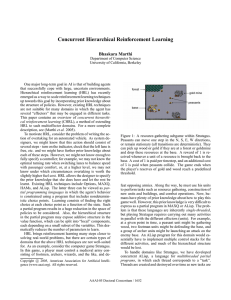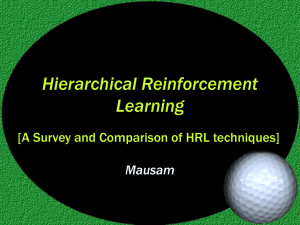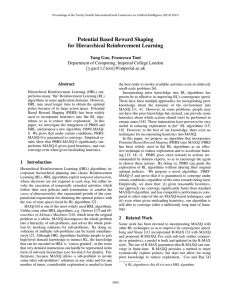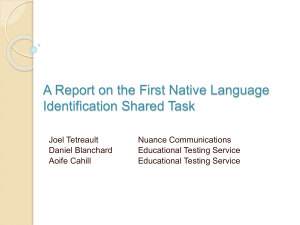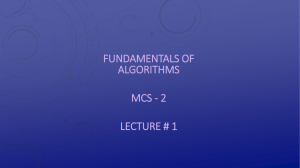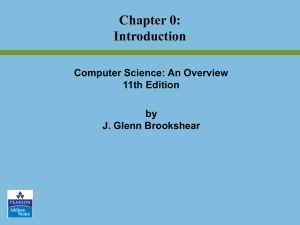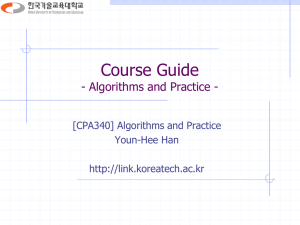Slides
advertisement
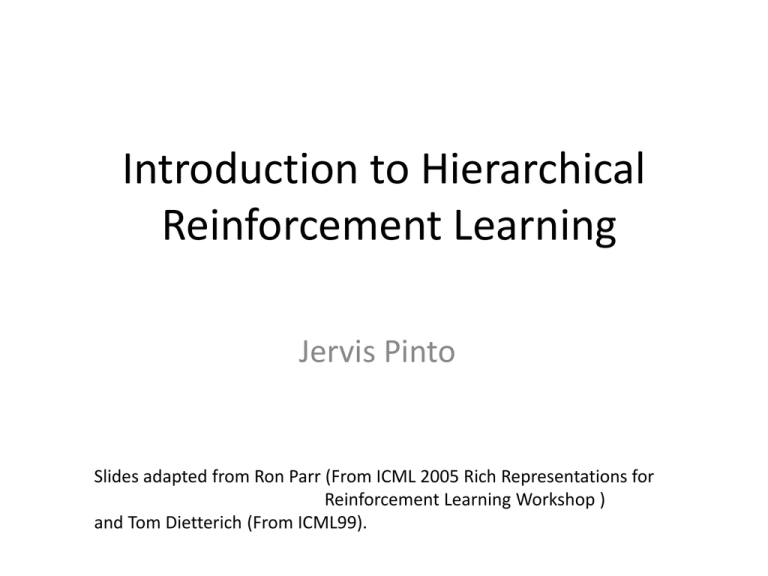
Introduction to Hierarchical Reinforcement Learning Jervis Pinto Slides adapted from Ron Parr (From ICML 2005 Rich Representations for Reinforcement Learning Workshop ) and Tom Dietterich (From ICML99). Contents • Purpose of HRL • Design issues • Defining sub-components (sub-task, options, macros) • Learning problems and algorithms • MAXQ • ALISP (briefly) • Problems with HRL • What we will not discuss – Learning sub-tasks, multi-agent setting, etc. Contents • Purpose of HRL • Defining sub-components (sub-task, options, macros) • Learning problems and algorithms • MAXQ • ALISP (briefly) • Problems with HRL Purpose of HRL • “Flat” RL works well but on small problems • Want to scale up to complex behaviors – but curses of dimensionality kick in quickly! • Humans don’t think at the granularity of primitive actions Goals of HRL • Scale-up: Decompose large problems into smaller ones • Transfer: Share/reuse tasks • Key ideas: – Impose constraints on value function or policy (i.e. structure) – Build learning algorithms to exploit constraints Solution Contents • Purpose of HRL • Design issues • Defining sub-components (sub-task, options, macros) • Learning problems and algorithms • MAXQ • ALISP (briefly) • Problems with HRL Design Issues • How to define components? – Options, partial policies, sub-tasks • Learning algorithms? • Overcoming sub-optimality? • State abstraction? Example problem Contents • Purpose of HRL • Design issues • Defining sub-components (sub-task, options, macros) • Learning problems and algorithms • MAXQ in detail • ALISP in detail • Problems with HRL Learning problems • Given a set of options, learn a policy over those options. • Given a hierarchy of partial policies, learn policy for the entire problem – HAMQ, ALISPQ • Given a set of sub-tasks, learn policies for each sub-task • Given a set of sub-tasks, learn policies for entire problem – MAXQ Observations Learning with partial policies Hierarchies of Abstract Machines (HAM) Learn policies for a given set of sub-tasks Learning hierarchical sub-tasks Example Locally optimal Optimal for the entire task Contents • Purpose of HRL • Design issues • Defining sub-components (sub-task, options, macros) • Learning problems and algorithms • MAXQ • ALISP (briefly) • Problems with HRL Recap: MAXQ • Break original MDP into multiple sub-MDP’s • Each sub-MDP is treated as a temporally extended action • Define a hierarchy of sub-MDP’s (sub-tasks) • Each sub-task M_i defined by: – T = Set of terminal states – A_i = Set of child actions (may be other sub-tasks) – R’_i = Local reward function Taxi • Passengers appear at one of 4 special location • -1 reward at every timestep • +20 for delivering passenger to destination • -10 for illegal actions •500 states, 6 primitive actions Subtasks: Navigate, Get, Put, Root Sub-task hierarchy Value function decomposition “completion function” Must be learned! MAXQ hierarchy Q nodes store the completion C(i, s, a) Composite Max nodes compute values V(i,s) using recursive equation. Primitive Max nodes estimate value directly V(i,s) How do we learn the completion function? • Basic Idea: C(i,s,a) = V(i,s’) • For simplicity, assume local rewards are all 0 • Then at some sub-task ‘i', when child ‘a’ terminates with reward r, update • Vt(i,s’) must be computed recursively by searching for the best path through the tree (expensive if done naively!) When local rewards may be arbitrary… • Use two different completion functions C, C’ • C reported externally while C’ is used internally. • Updates change a little: • Intuition: – C’(i,s,a) used to learn locally optimally policy at sub-task so adds local reward in update – C updates using best action a* according to C’ Sacrificing (hierarchical) optimality for…. • State abstraction! – Compact value functions (i.e C, C’ is a function of fewer variables) – Need to learn fewer values (632 vs. 3000 for Taxi) • Eg. “Passenger in car or not” irrelevant to navigation task • 2 main types of state abstraction – Variables are irrelevant to the task – Funnel actions: Subtasks always end in a fixed set of states irrespective of what the child does. Tradeoff between hierarchical optimality and state abstraction • Preventing sub-tasks from being context dependent leads to compact value functions • But must pay a (hopefully small!) price in optimality. ALISP • • • • Hierarchy of partial policies like HAM Integrated into LISP Decomposition along procedure boundaries Execution proceeds from choice point to choice point • Main idea: 3-part Q function decomposition – Qr, Qc, Qe • Qe = Expected reward outside sub-routine till the end of the program. – Gives hierarchical optimality!! Why Not? (Parr 2005) • Some cool ideas and algorithms, but • No killer apps or wide acceptance, yet. • Good idea that needs more refinement: – More user friendliness – More rigor in specification • Recent / active research: – Learn hierarchy automatically – Multi-agent setting (Concurrent ALISP) – Efficient exploration (RMAXQ) Conclusion • Decompose MDP into sub-problems • Structure + MDP (typically) = SMDP – Apply some variant of SMDP-Q learning • Decompose value function and apply state abstraction to accelerate learning Thank You!
